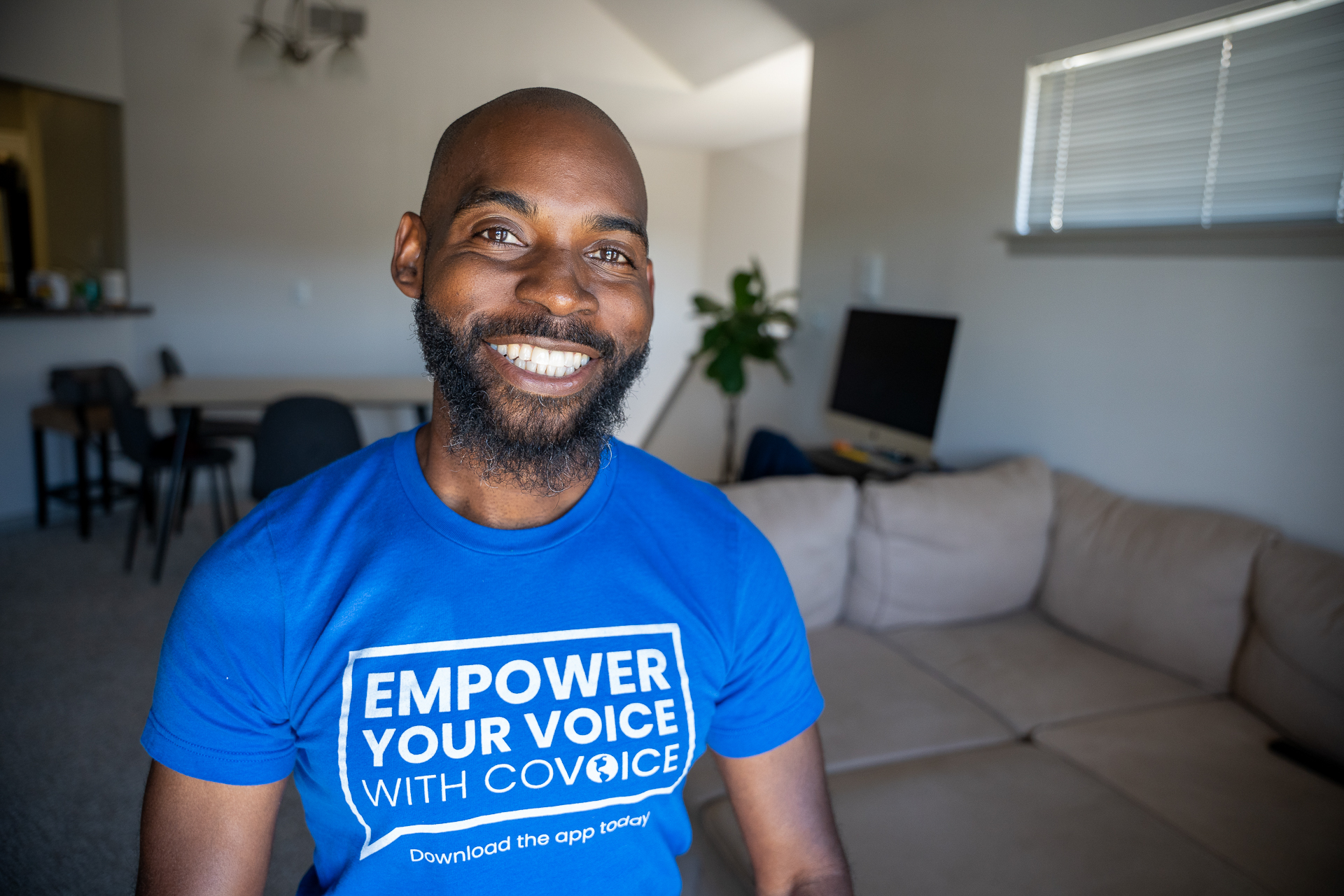 Efrain Soriano/Borderless Magazine
Efrain Soriano/Borderless MagazineJoel Arzu and his brother Regis are the brains behind CoVoice, an app people can use to be connected with an interpreter in real-time.
As a kid, Joel Arzu often had to interpret for his parents, who had immigrated from Honduras and were not fluent in English. It could be difficult for both him and his parents. He remembers one trip to the hospital when he was six or seven, when a doctor was frustrated with his parents for not being fluent in English. Arzu felt it was “belittling and lacking empathy.”
News that puts power under the spotlight and communities at the center.
Sign up for our free newsletter and get updates twice a week.
Now, Arzu and his brother Regis Arzu, Jr., are trying to help people who come from immigrant families like theirs with their CoVoice app. Through the app, users are connected to live Spanish-to-English interpreters, many of whom come from immigrant families themselves. By providing a low-cost interpretation service to immigrants], Arzu says he’s helping to address a problem for which many immigrants need a solution. More than a million people speak Spanish at home in Cook County alone.
Joel Arzu spoke to Borderless Magazine about his journey to creating the CoVoice app and how it could help empower people who came from families like his.
How does the CoVoice app work?
When [a customer] is ready to place a call to an interpreter, they hit “search for interpreter,” and all of our 400 interpreters who are available on the platform get an alert on their phone for them to accept a request coming in from this person. So let’s call him Julio, for example. Julio searches for an interpreter, and in all of our interpreters, let’s say 20 are available; they hit the green check mark. Julio starts to see those 20 [people] auto-populate on his screen for him to choose from.
It’s like the Uber of interpretation services where now he has 20 [people] to select based off of star ratings and their price per minute. So Julio decides to go with Samantha. Samantha gets connected to Julio and helps him out. He’s happy, Samantha’s happy, and that’s what we’re calling CoVoice 1.0.
How are most people using the app?
It’s mostly critical situations. At the hospital, for example, talking to a nurse and doctor. Legal situations have also been certain scenarios that might come up for users. We’re tracking that on average, it’s around a 15-minute conversation that happens, and it’s for doctor’s appointments, it’s immigration paperwork stuff, legal cases.
There’s one particular guy who I spoke to who sells cars. He’s been able to expand his markets to English-speaking people because he’s a Hispanic immigrant, and now he’s finding that CoVoice helps them sell cars better to people. So his business is growing in that sense, which we’re happy to hear.
Read More of Our Coverage
Why did you and your brother decide to create CoVoice?
I’m a first-generation American. My parents immigrated from Honduras to the United States and found it difficult to communicate in English because that wasn’t their first language. So we were, myself and my brothers — I’m the oldest of five brothers — we were essentially their interpreters growing up. And in different situations, whether it’s in medical clinics, parent-teacher conferences, [they] needed help talking, which is sad to think about.
In one case, we went to the hospital. I was dealing with an issue in my leg. I was around six or seven years old. The doctor was asking my mother what’s going on, and I’m having to explain, and my mother is kind of like, you know, out of the conversation at that point.
The way that I felt, and I was a kid, but just that feeling that I got from the doctor of almost feeling disgusted, “How are you not able to — like, you live in America, you should be able to talk English, especially because it would help in this scenario.” He didn’t say it this way. But it felt belittling [to] my mom. So that, to me, hurt a lot and that stuck with me.
So [me and my brother] had an “aha” moment about three years ago, where we said, “How awesome would it have been if our mom, our aunts, and other Latino immigrants, who we know, if they had an interpreter in their pocket, essentially, via an app?”
Right now, CoVoice is only available for English-Spanish interpretation. What other languages might you add?
My parents speak an indigenous language called Garifuna from our small village in Honduras. I love the idea of being able to, in the near future, travel to Honduras or hear of people who went to Honduras and were able to communicate with someone who solely spoke Garifuna because they were able to use CoVoice.
We don’t only work in the United States. We work across the world. So the idea of being able to communicate in any language and just removing language barriers across the world so everyone can kind of just be friendly and understand and communicate is a beautiful thought that is part of our mission.
This interview has been edited for length and clarity.

